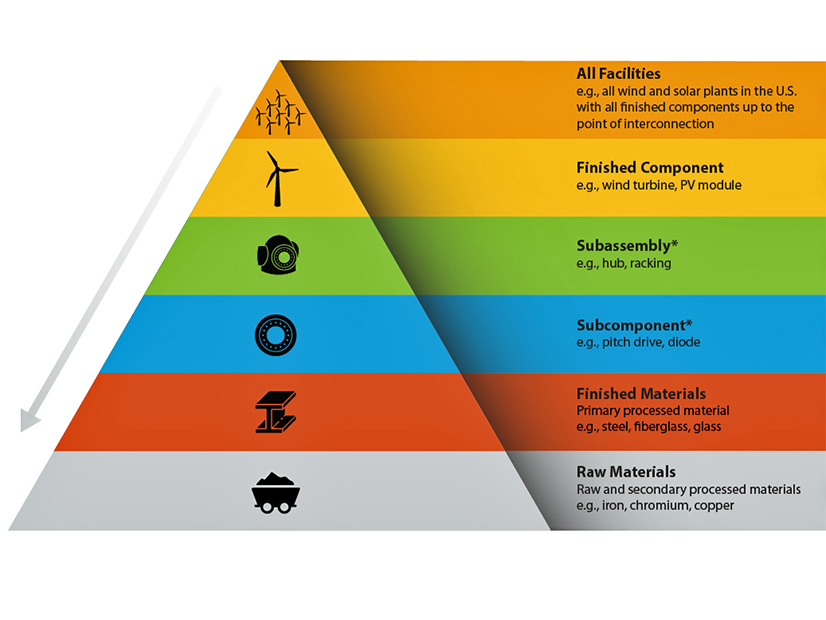
The National Renewable Energy Laboratory has created a database that quantifies material needs for building each megawatt of new wind and solar power and examines the supplies of those materials.
The Renewable Energy Materials Properties Database is a first-of-its-kind resource, according to Annika Eberle, NREL’s lead researcher on the project.
“The database also allows users to explore the national and global availability of each material and evaluate their potential supply risks,” she said in a news release.
The REMPD compiles extensive information on the vast array of materials needed for latest-generation wind and solar power technology, including country of origin, significant uses, projected availability and physical properties. It does not make predictions, but its data can provide insight into constraints that may develop in the supply chain.
NREL specifically analyzed the future material needs of wind energy development for an accompanying report, “Materials Used in U.S. Wind Energy Technologies: Quantities And Availability for Two Future Scenarios.”
It sounds a cautionary note that has been raised elsewhere: To meet the Biden administration’s lofty goals, the wind energy industry would have to increase installations by a factor of 500% to 1,000%, which could outstrip current global supplies of materials such as carbon fiber, which is used for everything from golf clubs to airplanes.
“We expect demand for carbon fiber to grow rapidly with increasing deployment of wind energy, especially as blades become longer and use more carbon fiber,” Eberle said. “By 2025, our High Deployment scenario projects that new U.S. wind energy installations could use more carbon fiber in a year than is currently produced in the United States.”
A single offshore wind turbine has a calculated need for 12,380 kilograms of carbon fiber.
The authors suggest increased recycling and use of alternative materials to reduce the supply chain pressures shown in the REMPD.
There is also the issue of domestic production: The authors note that 5,000 heavy cast-iron hubs and bedplates are installed each year on American wind farms, and the number is expected to increase to 12,000 to 20,000 annually.
Almost all are imported now, and this growth presents opportunities for U.S. manufacturers.
Details
The REMPD uses a six-tier taxonomy to organize data at the major steps in the wind and solar power supply chain, from raw material to finished material to subassembly to finished component, plus the larger picture of the wind and solar facilities nationwide.
It lists, for example, 159 materials from acetone to zinc needed for a 100-MW solar plant employing cadmium telluride modules versus 168 materials for a similar-sized plant employing crystalline silicon technology. A 7-KW residential or a 200-KW commercial rooftop installation uses vastly smaller quantities of just 124 materials.
The wind database is less complicated, estimating the needs of a single 3.4-MW onshore geared turbine and a single 15-MW offshore direct-drive turbine. The 40 component materials of the onshore turbine weigh in at a combined 488,867 kilograms. The offshore turbine has only 39 component materials, but they weigh a combined 1.34 million kilograms.
In both examples, low-carbon steel is the bulk of the structure: 797,000 kilos for the offshore turbine. The rare earth element terbium is on the opposite end of the scale: less than a gram is calculated for the onshore turbine.
NREL collaborated on the REMPD with the Department of Energy’s Wind Energy Technologies Office and Solar Energy Technologies Office, which funded the project, and with Oak Ridge National Laboratory, Sandia National Laboratories, Lawrence Berkeley National Laboratory and Arizona State University.

